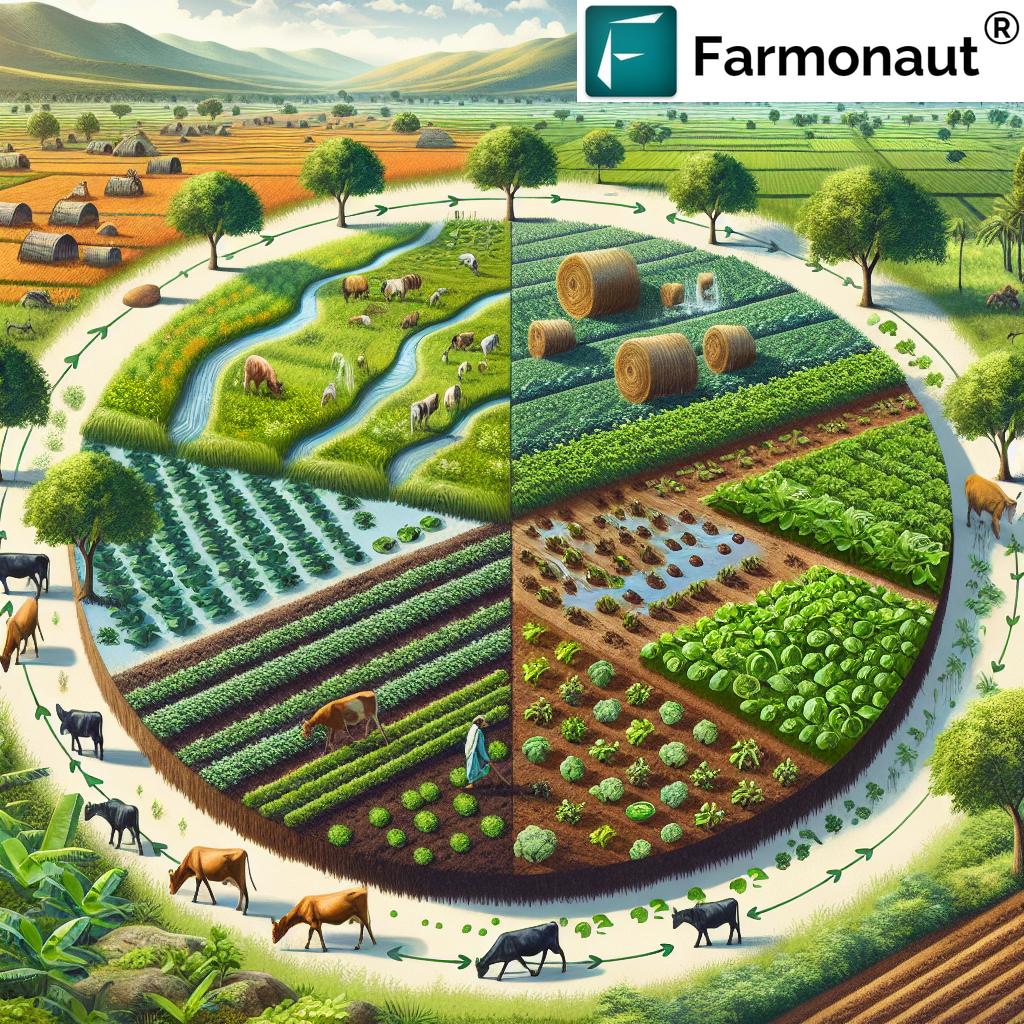Cedrus Deodara, Deodar Tree, Cedrus Atlantica Glauca Guide: The Complete 2026 Outlook
“Deodar trees can absorb up to 48 pounds of CO₂ annually, supporting significant carbon sequestration in sustainable forestry.”
Cedrus deodara, also known as the deodar tree or Himalayan cedar, stands as one of the most revered, towering conifers of the western Himalayas. The unique aesthetics, durability, and resistance of its wood, plus its environmental role, make this large, evergreen species a cornerstone within forestry and sustainable land management initiatives worldwide. Alongside the striking cedrus atlantica glauca (Blue Atlas cedar) and cedrus atlantica glauca pendula (its pendulous, ornamental variant), the genus Cedrus commands renewed relevance in 2026’s climatically vulnerable and ecologically conscious world.
Botanical Overview: Cedrus deodara, Cedrus atlantica glauca & Relatives
Cedrus deodara is often referred to as a majestic, towering conifer, native to the western Himalayas. It flourishes at altitudes between 1,500 and 3,200 meters, especially in mountainous regions near Kashmir, Himachal Pradesh, Uttarakhand, and parts of Afghanistan, Pakistan, and Nepal. This tree is famed for its elegant, pyramidal form, long sweeping branches, and fine, needle-like, fragrant leaves, typically colored in soft green to bluish hues.
- Growth Habit: Can grow up to 40–50 meters tall with trunk diameters reaching 3 meters.
- Evergreen & Hardy: It maintains foliage year-round and withstands cold, frost, and moderate drought.
- Resinous & Durable Wood: The fragrant, resin-rich wood offers high natural resistance to decay, pests, and diseases—traits invaluable for forestry and timber production.
Key Botanical Relatives & Varieties
-
Cedrus atlantica glauca (Blue Atlas Cedar):
- A dazzling, blue-needled cedar found in the Atlas Mountains (primarily Morocco and Algeria).
- Exhibits high adaptability, thriving not only in its native range but in cooler, semi-arid regions worldwide.
- Highly valued for its hardiness, ornamental presence, and soil stabilization—important assets for modern forestry projects.
-
Cedrus atlantica glauca pendula:
- A pendulous form of Blue Atlas cedar, admired in botanical gardens, urban green spaces, and luxury landscapes for its draping, weeping branches.
- Besides its aesthetic appeal, this variant aids reforestation and urban forestry by adapting to compact spaces and diverse soils.
Through this botanical diversity, the genus Cedrus reinforces ecological resilience and meets contemporary forestry demands, especially as climate change challenges conventional land management in 2026.
Ecological, Environmental & Sustainable Forestry Role in 2026
The ecological significance of the deodar tree, cedrus atlantica glauca, and their variants has never been more critical. In 2026, we face accelerated climate change, soil erosion, water scarcity, and biodiversity loss—especially in mountainous and semi-arid regions. These species serve as natural shields and ecological engineers:
- Soil Conservation & Stabilization:
- Their deep root systems anchor the soil, preventing landslides, erosion, and surface runoff—an invaluable service in Himalayan foothills and sloped landscapes.
- Water Regulation:
- By reducing surface runoff, these conifers help conserve water, recharge groundwater, and buffer against flash floods.
- Biodiversity Enhancement:
- Deodar forests are hotspots for diverse flora and fauna—including Himalayan black bears, leopards, pheasants, and rare orchids.
- As cedrus atlantica glauca expands globally, it boosts local biodiversity and supports native pollinators and birds.
- The pendulous variants add habitat heterogeneity for urban wildlife.
- Carbon Sequestration & Climate Mitigation:
- With each mature deodar tree capable of absorbing nearly 48 pounds of CO₂ annually, these forests act as carbon sinks crucial for 2026 climate targets.
- Microclimate Moderation:
- Strategically planted deodar and glauca trees create cooler, humid microclimates, ameliorating heat extremes—especially vital for agriculture in climate-impacted regions.
In agroforestry, the integration of deodar and cedrus atlantica glauca improves land resilience to climate variability, while in urban forestry, their adaptability and ornamental form raise both the utility and beauty of green spaces.
“Cedrus atlantica glauca forests cover over 2 million hectares globally, enhancing biodiversity and soil conservation for 2025 targets.”
Comparative Table of Deodar Tree (Cedrus deodara) and Cedrus Atlantica Glauca: Ecological & Forestry Roles
| Tree Species | Native Region | Est. Growth Rate (m/yr) | Est. Carbon Sequestration (t/ha/yr) | Preferred Climate | Conservation Status (2025) | Ecological Benefits | Forestry Uses |
|---|---|---|---|---|---|---|---|
| Cedrus deodara | Western Himalayas (India, Pakistan, Afghanistan, Nepal) | 0.5–1.0 | 8–12 | Cool, moist, mountainous, moderate drought/frost | Near Threatened |
|
|
| Cedrus atlantica glauca | Atlas Mountains (Morocco, Algeria); Widely introduced worldwide | 0.3–0.7 | 6–10 | Cool, semi-arid, tolerates poor soils, urban adaptable | Vulnerable |
|
|
| Deodar Tree (General Overview) | Himalayan belt, expanding to cool-temperate and urban regions worldwide | 0.4–0.9 | 7–11 | Cool, moderate climates with seasonal rains; urban adaptable | Regionally threatened due to habitat loss |
|
|
Economic Significance and Agricultural Implications of Cedar Species
In 2026, as rural and mountain economies evolve, the economic and agricultural value of deodar and cedrus atlantica glauca becomes even more pronounced:
- Timber Trade:
- Deodar wood is in high demand for construction, railway sleepers, utility poles, furniture, and artisan crafts due to its strength, durability, and pest resistance.
- Cedrus atlantica glauca, while more renowned for ornamental and urban uses, also supplements global timber markets.
- Rural Livelihoods & Local Economies:
- Income generation for mountain communities through sustainable harvesting, seedling nurseries, and agroforestry projects.
- Agricultural Benefits:
- Tree canopies provide windbreaks, protect crops, and reduce weather extremes for farming—a critical boon as Himalayan agriculture faces more climate risks.
- Enrichment of soil via leaf litter increases organic content and fertility for rural farming systems.
- Conservation planting supports sustainable development goals (SDGs) for communities and agriculture alike.
- Ornamental and Urban Values:
- The pendulous cultivar, cedrus atlantica glauca pendula, brings premium ornamental value to cities, green belts, resorts, and eco-tourism sites.
Sustainable management ensures that these invaluable benefits persist. Modern forestry programs promote selective cutting, natural regeneration, and community-led conservation to balance economic profit and ecosystem health. Certification for sustainable timber and traceability, such as what our traceability platform offers, further assures responsible sourcing and supports local economies.
Forestry Programs & Reforestation Efforts in 2026: A Focus on Deodar & Glauca
In response to deforestation, erosion, and water crises, global forestry sector initiatives have, by 2026, increasingly prioritized native and adaptable tree species—particularly deodar trees and Blue Atlas cedar. These projects aim not only at carbon capture and soil repair but also at community empowerment and climate change adaptation.
Critical Roles & Initiatives
-
Afforestation & Reforestation:
- Large-scale planting of deodar and cedrus atlantica glauca on degraded slopes and eroded land to restore ecosystem function and prevent landslides.
- Agroforestry integration, where trees and crops co-exist for resilience and productivity.
-
Urban and Peri-Urban Greening:
- Expansion of urban forests of Blue Atlas cedar and its pendulous form for climate moderation, air purification, and aesthetic enhancement in growing cities.
-
Watershed & Riparian Zone Protection:
- Roots stabilize banks, mitigate flooding, recharge water tables.
-
Community-Based Forestry Programs:
- Local stewardship maximizes benefits and ensures deodar populations remain robust despite market pressures.
Efforts in the western Himalayas, Atlas regions, and newer global landscapes are vital for achieving international conservation and sustainability goals beyond 2026.
The adaptability of cedrus atlantica glauca and its pendulous forms now makes them components outside their native ranges, aiding in urban forestry from Europe to North America. Their strong resistance to pollution and drought gives them unique value against new environmental threats posed by climate instability.
For precision forest monitoring, real-time area mapping, and tree health analysis, our users benefit from Farmonaut’s satellite and AI-powered apps—insightful for forest managers, policymakers, and local communities. Explore our carbon footprint monitoring tools to meet global compliance and sustainability goals.
Conservation Challenges & Future Prospects for Cedrus Species
Despite their utility, deodar trees and cedrus atlantica glauca face urgent conservation threats in 2026:
- Habitat Fragmentation: Expanding agriculture, urbanization, and infrastructure projects disrupt genetic diversity and wildlife corridors.
- Overexploitation: Unsustainable wood extraction in unregulated markets weakens natural regeneration and forest health.
- Climate Variability: New pest and disease profiles, coupled with unpredictable rainfall, endanger seedling survival and long-term resilience.
- Poor Regeneration Management: Overgrazing, fire, and invasive species further limit natural propagation.
To secure the future of these forests:
- In-Situ Conservation: Prioritize protection of existing stands within natural landscapes, especially in the Himalayan foothills and Atlas mountains.
- Community Forestry & Stewardship: Empower local communities with incentives, environmental education, and participatory forest management.
- Ex-Situ Methods: Maintain seed banks and genetic repositories, develop sapling nurseries for replanting, and invest in research on climate-resilient varieties.
- Integration with Technology: Use satellite and AI to monitor forest health, illegal logging, and regeneration rates. Our large scale forestry management solutions support such efforts efficiently and affordably.
The strategic, science-based planting of deodar and glauca species directly addresses the United Nations Sustainable Development Goals—notably climate action, life on land, and sustainable communities—while fostering ecological and economic security for 2026 and beyond.
Farmonaut: Satellite-Driven Sustainability in Forestry, Cloud-based Traceability & Resource Monitoring
At Farmonaut, we make advanced satellite-driven forestry and agriculture insights accessible and actionable for governments, businesses, and local communities worldwide. Through our platform, users receive real-time monitoring, AI-based advisory, and blockchain-supported traceability—empowering them in the transition to low-carbon, high-resilience land use.
- Satellite Monitoring: Access to high-resolution NDVI, soil health, and plantation tracking for active forest and land management. View our forestry advisory and crop plantation tools.
- Real-Time Environmental Impact: Our carbon footprint monitoring system assists users in managing emissions, documenting sequestration, and ensuring climate compliance in forestry projects.
- Supply Chain Traceability: Guarantee timber and resource origin authenticity with our blockchain traceability platform, reducing fraud and boosting market trust.
- Crop Loan and Insurance APIs: For forestry-linked farmers and agri-businesses, our APIs streamline financial access using satellite-based verification.
- Fleet and Resource Management Solutions: Our fleet management module optimizes movement of forestry vehicles and machinery, reducing costs and emissions.
- API Access: Developers and businesses can integrate Farmonaut’s Forestry APIs into their operational systems. Developer documentation here.
Interested in a scalable satellite subscription?
FAQ: Cedrus deodara, Cedrus atlantica glauca, Deodar Trees, and Sustainable Forestry
-
Q: What makes Cedrus deodara critical for Himalayan forestry?
A: The deodar tree’s deep roots, high tolerance to mountain climates, and rapid growth stabilize soils, prevent landslides, and support native biodiversity, making it a keystone in Himalayan forestry and ecosystem management. -
Q: Can cedrus atlantica glauca thrive outside North Africa?
A: Yes. Its adaptability and resilience enable it to flourish in cooler climates worldwide, including Europe, Australia, and North America, supporting diverse forestry and urban reforestation projects. -
Q: Do deodar and blue atlas cedar have roles beyond timber?
A: Absolutely. They offer ecosystem services including carbon sequestration, habitat provision, climate regulation, shade, and aesthetic value, which are increasingly valued in sustainable land management. -
Q: How do satellite and AI solutions improve reforestation and forest management?
A: Satellite monitoring provides real-time insights into forest health, illegal activities, plantation growth, and more, enabling targeted conservation and resource use—read about Farmonaut’s forest management tools for details. -
Q: Are these species endangered in 2026?
A: Cedrus deodara is considered “Near Threatened,” while Cedrus atlantica glauca is “Vulnerable” due to habitat and climate pressures. Conservation and reforestation programs are active to reverse these trends. -
Q: What app can be used to monitor deodar plantations?
A: We recommend the Farmonaut Satellite Forestry & Plantation Monitoring App for intuitive, scalable management.
Conclusion: Preserving the Legacy & Future Promise of Deodar and Glauca Cedars
As we stride into 2026 and beyond, the deodar tree (cedrus deodara), cedrus atlantica glauca, and their pendulous forms remain pivotal assets in forestry, agriculture, and broader environmental stewardship. Their ecological services, economic contributions, and ornamental splendor bolster sustainable land management where it is needed most—across the western Himalayas, Atlas ranges, rapidly urbanizing cities, and newly emerging green landscapes.
Proactive conservation and the adoption of technology for monitoring, management, and transparency are no longer optional—they are essential to ensure these majestic conifers continue to thrive and serve as natural allies for future generations. Through advanced data-driven approaches—like those offered by Farmonaut—we create a bridge between tradition and innovation, ensuring that the role of cedrus deodara and its relatives is amplified in the global quest for resilience, carbon neutrality, and ecological integrity.
Let’s plant, protect, and nurture the cedar legacy—because the future of our landscapes depends on it.













